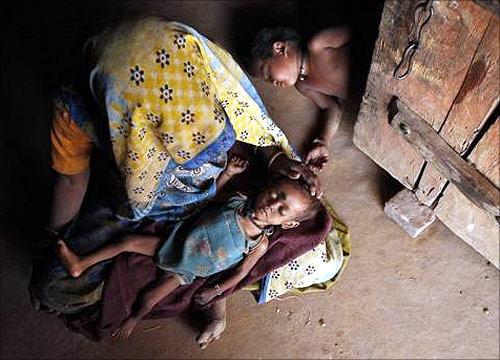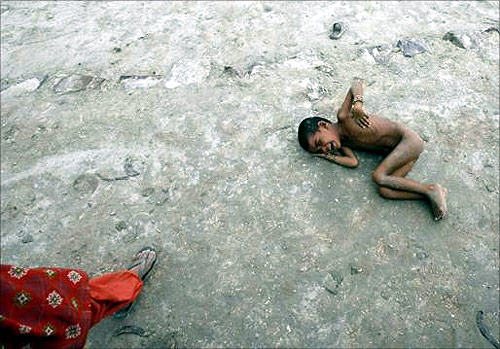 | « Back to article | Print this article |
Why the food security bill will not help the poor
'Food security' will, unfortunately, become a giant boondoggle, says T N Ninan.
Tucked away in a long Budget speech by Amit Mitra, West Bengal's finance minister, is a little nugget of information: more than seven million bogus ration cards were cancelled in the state last year.
So even if all 18 million families in the state had on paper been given cards, 40 per cent of the cards were fake.
This when the government hopes that Parliament will pass a law to distribute some 50 million tonnes of grain, at roughly 90 per cent subsidy, on the basis of such ration cards as exist, to two-thirds of the national population (75 per cent of rural and 50 per cent of urban) - at an annual cost of over Rs 1,00,000 crore.
Clikc NEXT to read more...
Why the food security bill will not help the poor
West Bengal is not unique when it comes to bogus ration cards.
Government reports and surveys have revealed that roughly half the grain that goes through the public distribution system is misdirected; in other words, it falls into the hands of vested interests, who can sell it back to the government's procurement agencies and create what for them would be a very beneficial, if not exactly virtuous, cycle.
Juxtapose this with some other statistics that came out two days ago from the 2011 census: that roughly one in six urban households lives in slums.
Click NEXT to read more...
Why the food security bill will not help the poor
Of this one-sixth, the census says, 90 per cent have electricity connections, 70 per cent own TV sets, more than half have bank accounts, and 70 per cent have tap water, while 63 per cent have mobile phones.
This presents a picture of people who are poor enough to live in slums, but not so poor that they need grain at a 90 per cent subsidy.
And remember that while only one in six urban families lives in slums, it is three out of six (ie half) who will get grain at 90 per cent subsidy.
Click NEXT to read more...
Why the food security bill will not help the poor
By definition, two-thirds of those who are to get virtually free grain in urban areas will be non-slum dwellers, who are likely to be better off than slum dwellers who themselves more often than not own TV sets and the like.
The first set of statistics, about bogus ration cards and misdirected grain, points to the near-certainty that anything up to half the money spent on food security will be misdirected, and therefore wasted.
The second set of statistics argues that you don't need the 90 per cent subsidy either -since the majority of even slum dwellers have electricity, bank accounts, TV sets and the like.
Click NEXT to read more...
Why the food security bill will not help the poor
The statistics make a third point: even in the unlikely event that governance improves dramatically and all the subsidised grain goes to 800 million correctly identified beneficiaries (making up the required two-thirds of the population), the fact is that only 360 million of them are officially poor.
Finally, if you take Rs 1,00,000 crore and distribute it among the 360 million who are below the poverty line, each poor five-member family would get over Rs 1,100 per month - more than enough to buy twice the subsidised grain now on offer, at market prices.
Indeed, enough to convert a good chunk of the poor into non-poor!
Click NEXT to read more...
Why the food security bill will not help the poor
The only conclusion to be drawn from all this is that what is being called the law on food security will be a giant boondoggle. Bleeding hearts might argue that this is typically unfeeling logic from a pink newspaper; it is not.
Poverty is a blot on the nation, and large numbers of malnourished people are a national shame. The issue is not whether something should be done about it, but what and how.
And it seems obvious that the proposed food security law has it all wrong, perhaps because the real objective is not economic but political.






